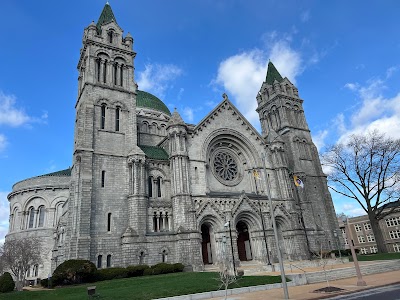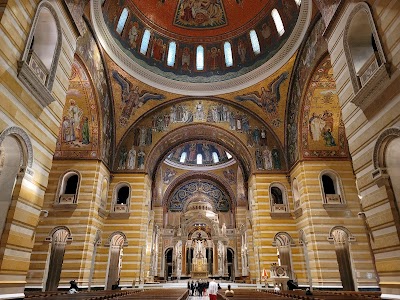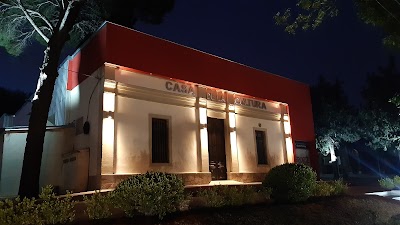San Luis Cathedral (Catedral de San Luis)
Overview
San Luis Cathedral, located in the heart of San Luis, Argentina, is a magnificent testament to the city’s rich cultural and historical heritage. With its commanding presence and stunning architectural design, it draws both locals and tourists alike, making it a must-visit landmark.
Constructed in the mid-19th century, the San Luis Cathedral showcases neoclassical architectural features. Originally founded in 1843 and completed in 1901, this cathedral has served as a spiritual and community pillar for over a century. Built on the site of an earlier, more modest church, it was designed to accommodate the growing population of the city.
The cathedral's exterior is striking, featuring tall columns, a grand entryway, and an impressive dome that crowns the structure. Its façade boasts intricate carvings and detailed stonework, reflecting the craftsmanship of the era. The twin bell towers, among the tallest structures in the city, contribute to the cathedral's iconic skyline. As you approach, statues of saints line the entrance, warmly welcoming worshippers and visitors alike.
Inside, the San Luis Cathedral is equally breathtaking. The high vaulted ceilings and stained glass windows create a serene atmosphere, complemented by religious art, including paintings and sculptures that depict various saints and biblical scenes. The main altar, crafted from marble, serves as a focal point, drawing the eyes upward. The remarkable acoustics make it an ideal location for religious ceremonies and musical performances.
Beyond its architectural beauty, the cathedral holds significant historical and cultural value. It has witnessed numerous pivotal events in the city’s history, from social upheavals to joyous celebrations. Through various restorations, the cathedral has maintained its beauty and structural integrity, ensuring its place as a significant historical monument for future generations.
An interesting fact about the San Luis Cathedral is its role in local festivals and events. It serves as the epicenter of the city’s religious activities, especially during Holy Week and other significant Catholic holidays. During these times, the cathedral is beautifully decorated, and special services and processions attract visitors from all over the country. Witnessing the local community come together in faith and celebration within the walls of this majestic building is an extraordinary experience.
For those interested in architecture and history, guided tours are available, providing deeper insights into the cathedral's design, construction, and significance. Knowledgeable guides share fascinating stories about its past, the symbolism of the artwork, and the various architectural styles that influenced its construction. These tours are offered in multiple languages, making them accessible to foreign tourists.
In addition to its religious functions, the San Luis Cathedral plays a crucial role in the community as a venue for significant life events such as baptisms, weddings, and funerals. It has been the setting for countless personal milestones, embedding itself into the collective memory of the city’s inhabitants.
The area surrounding San Luis Cathedral is equally captivating. Located near Plaza Pringles, a popular public square, locals gather to relax and socialize. The square is surrounded by cafes, restaurants, and shops, providing a perfect opportunity to stroll around and absorb the local culture after visiting the cathedral. This blend of historical architecture and modern amenities makes the area a delightful spot for tourists to explore.
In summary, San Luis Cathedral stands as a beacon of faith, history, and culture in San Luis, Argentina. Its grandeur and beauty are matched by its importance to the community and visitors alike. Whether you are a history enthusiast, an architecture buff, or simply seeking a peaceful sanctuary, the San Luis Cathedral offers something for everyone. Its timeless elegance and serene atmosphere provide a unique glimpse into the heart and soul of San Luis. Visiting this iconic structure is more than just a sightseeing experience; it’s a journey through time and tradition.







